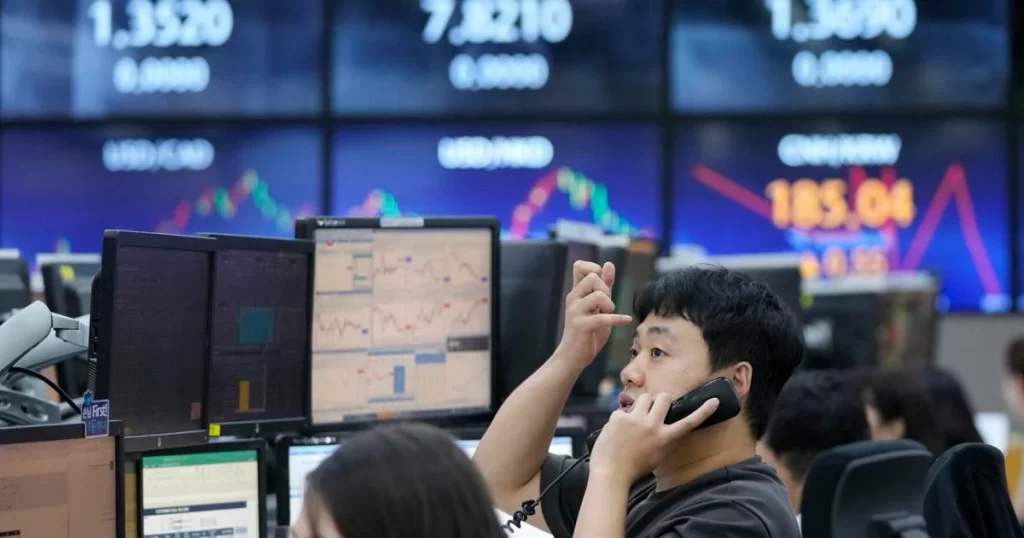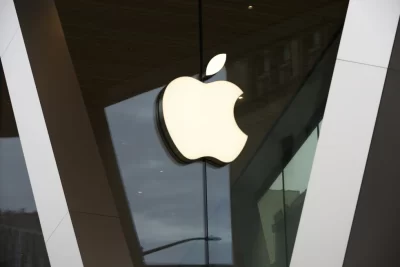
Asian markets were mixed on Friday, with only a few open due to public holidays across the region.
U.S. futures and oil prices edged higher.
Tokyo’s Nikkei 225 index was down 0.3% at 31,764.01. In Bangkok, the SET declined 0.5%. Australia’s S&P/ASX 200 added 0.4% to 7,054.40. India’s Sensex gained 0.4%.
Markets were closed in Hong Kong, Shanghai and Seoul.
China Evergrande, the world’s most heavily indebted real estate developer, said in a notice to the Hong Kong Stock Exchange that its shares would remain suspended until further notice after they plunged nearly 20% on Wednesday and were suspended from trading as of Thursday.
On Thursday, the S&P 500 rose 0.6% to 4,299.70. The Dow Jones Industrial Average added 0.3% to 33,666.34, and the Nasdaq composite gained 0.8%, to 13,201.28.
A drop in oil prices took some heat off the stock market, a day after crude reached its highest price of the year. Early Friday, U.S. benchmark crude was up 19 cents at $91.90 per barrel. It declined nearly $2 on Thursday.
Brent crude oil, the international standard, picked up 15 cents to $93.25 per barrel.
Treasury yields also relaxed Thursday, giving stocks a breather, particularly Big Tech companies.
A 2.1% climb for Meta Platforms and 1.5% gain for Nvidia were two of the strongest forces lifting the S&P 500.
On Wall Street, Peloton Interactive jumped 5.4% after the online exercise bike and fitness company announced a five-year partnership with athletic wear maker Lululemon Athletica.
On the losing end, Micron Technology slumped 4.4% despite reporting better results for the latest quarter than analysts expected. Its forecast for upcoming profitability fell short of some analysts’ estimates.
Stocks are still on track for their worst month of the year as Wall Street grapples with a new normal where interest rates may stay high for a while. The Federal Reserve has pulled its main interest rate to the highest level since 2001 in hopes of extinguishing high inflation, and it indicated last week it may cut rates by less next year than earlier expected.
It’s a sharp departure from prior years for investors, who counted on the Fed to cut rates quickly and sharply whenever things looked dicey. Lower rates can goose financial markets, while high rates slow the economy by design and hurt prices for stocks and other investments.
The threat of higher rates for longer has pushed Treasury yields up sharply in the bond market. The yield on the 10-year Treasury climbed above 4.67% in the morning, near its highest level since 2007. It later fell back to 4.57%, down from 4.61% late Wednesday.
The two-year Treasury yield, which moves more on expectations for Fed action, slipped to 5.06% from 5.14%.
Many other challenges are also looming over the economy and Wall Street besides the threat of higher interest rates for longer.
Most immediate is the threat of another U.S. government shutdown as soon as this weekend, though financial markets have held up rather well during past shutdowns.
Yields squiggled following the latest batch of reports on the economy.
One said fewer workers applied for unemployment benefits last week than economists expected. It’s the latest signal of a solid job market, one that has helped prevent a recession but may also be feeding upward pressure into inflation.
A separate report said the U.S. economy grew at a 2.1% annual rate during the summer, following some revisions to earlier estimates. That was below economists’ expectations, but economic growth looks like it’s remained solid through the third quarter at least. The question is how the trend goes in the final three months of the year.
Altogether, the reports didn’t give anything to change investors’ minds about the Fed staying tough on interest rates, something that Wall Street calls a “hawkish” stance on policy.
In currency dealings, the dollar rose to 149.37 Japanese yen from 149.31 yen late Thursday. The euro climbed to $1.0578 from $1.0568.
___
AP Business Writer Stan Choe contributed.







